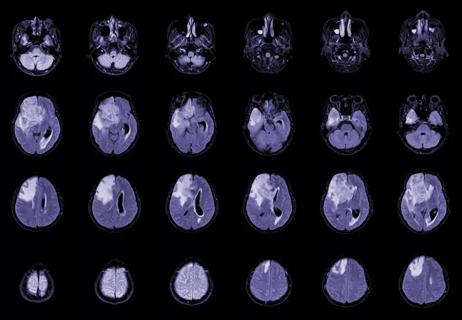Advertisement
Highlights from the 2014 Medical Innovation Summit

Cancer imaging has been a significant catalyst in improving diagnosis, staging and clinical decision-making for oncologists, particularly given that most tumors are not outwardly visible or palpable. Optimal imaging hinges on the ability of equipment to accurately locate tumors, detect lymph node involvement, and pinpoint possible spread to surrounding organs and tissues—all of which often spell better outcomes for patients.
Advertisement
Cleveland Clinic is a non-profit academic medical center. Advertising on our site helps support our mission. We do not endorse non-Cleveland Clinic products or services. Policy
Despite the fact that cancer continues to be the leading cause of death worldwide, the evolution of functional and molecular imaging in oncology is offering increased hope for earlier diagnoses and more refined treatment planning, potentially leading to greater survival.
Among the sessions at the 2014 Medical Innovation Summit will be “The Future of Cancer Imaging: The Next Generation Software and Hardware,” which will feature presentations from healthcare leaders in oncology and the imaging industry. Presenters include Falko Busse, PhD, general manager, Radiology Solutions, Philips Healthcare; Jorg Debatin, vice president and chief technology officer, GE Healthcare; Donald Fowler, president & CEO, Toshiba American Medical Systems; John Greskovich, MD, Taussig Cancer Institute, Cleveland Clinic; and Greg Sorensen, MD, CEO, Siemens Healthcare North America. Daniel Moulthrop, CEO of City Club of Cleveland, will moderate.
Talks will largely emphasize how imaging tools are revolutionizing the accuracy with which oncologists can detect tumor deposits and stage disease earlier than ever. Examples to be discussed include:
• Digital positron emission tomography (PET), which utilizes a novel photosensor, called a digital silicon photomultiplier, to enhance image quality through improved spatial resolution and sensitivity gain. This yields high-quality images more efficiently and with shorter patient scan times.
“This will improve the detection of smaller tumor deposits due to improvement in spatial resolution, potentially diagnosing cancer at even earlier stages,” explains Dr. Greskovich.
Advertisement
• Magnetic resonance PET, or MR-PET, which is a hybrid modality that offers anatomical, functional and metabolic imaging for highly precise staging, re-staging and treatment monitoring. For instance, MR-PET optimizes the accuracy of co-registration (or alignment) of the image sets.
“This is particularly beneficial for abdominal and pelvic tumors occurring in pancreatic, colorectal and liver cancer, as it detects primary tumors and metastatic disease with better precision in comparison to PET combined with computed tomography (CT),” says Dr. Greskovich, who notes his use of PET-MRI at the Cleveland Clinic for imaging tumors of the gastrointestinal tract.
Further, by eliminating the CT component, PET-MRI reduces radiation exposure in pediatric populations undergoing scans for staging and therapy monitoring.
• Magnetic resonance-Linac, which is a novel MR-guided radiotherapy unit that can perform real-time, continuous MR imaging of a patient’s tumor during radiotherapy. This means oncologists can better monitor treatment and ensure the radiation beam targets the tumor appropriately, enabling adaptation if the tumor moves outside the target zone. It also eliminates the risk of “geographic miss”—failure to fully radiate the intended target—which in turn could improve the patient’s quality of radiation therapy.
In consideration of how best to bring these technologies to as many patients as possible, discussions will touch on issues related to the economics of imaging in the U.S. Panelists will comment on how novel imaging equipment can be developed and implemented successfully in the era of cost containment and bundled payer models.
And in terms of maximizing future outcomes, combining these machines with radiation treatment is anticipated to be a game changer in oncological care.
“Targeted, high-dose, stereotactic radiotherapy using the most advanced on-board cancer imaging will help us win the battle against cancer,” states Dr. Greskovich. “It will allow us to deliver significantly higher radiation doses to cancer targets that we can visualize daily during the ‘beam-on’ phase, ensuring that we never miss the ‘bull’s-eye.’ ”
Advertisement
Advertisement

Key research findings to watch

Timing and type of side effects differ greatly from chemotherapy

Dedicated multidisciplinary teams support 84 ultra-rare cancers

New research from Cleveland Clinic helps explain why these tumors are so refractory to treatment, and suggests new therapeutic avenues

Combination of olaparib and carboplatin results in complete durable response for a patient with BRCA2 and “BRCAness” mutations

Early communication between oncologists and ophthalmologist warranted

Case-based course delves into latest treatment approaches

Long-term relationship building and engagement key to gaining community trust